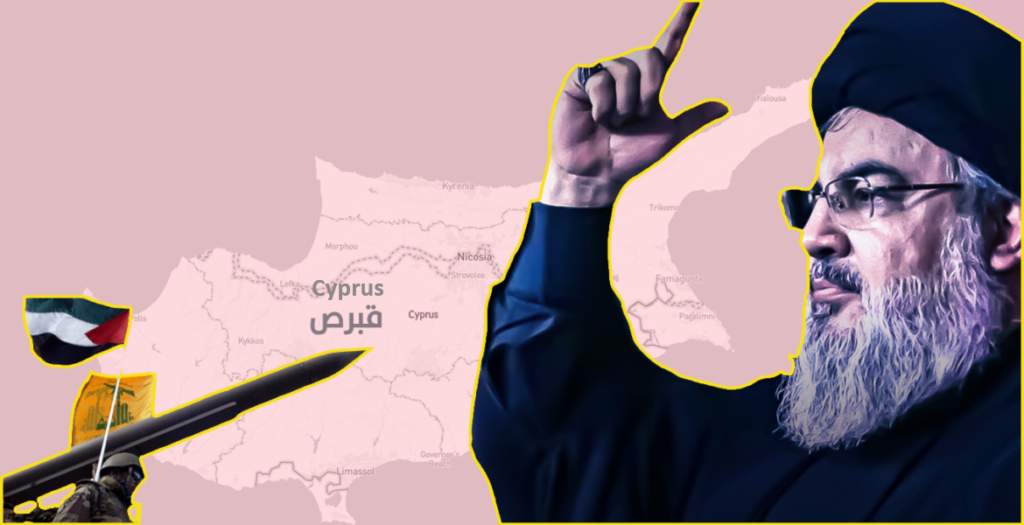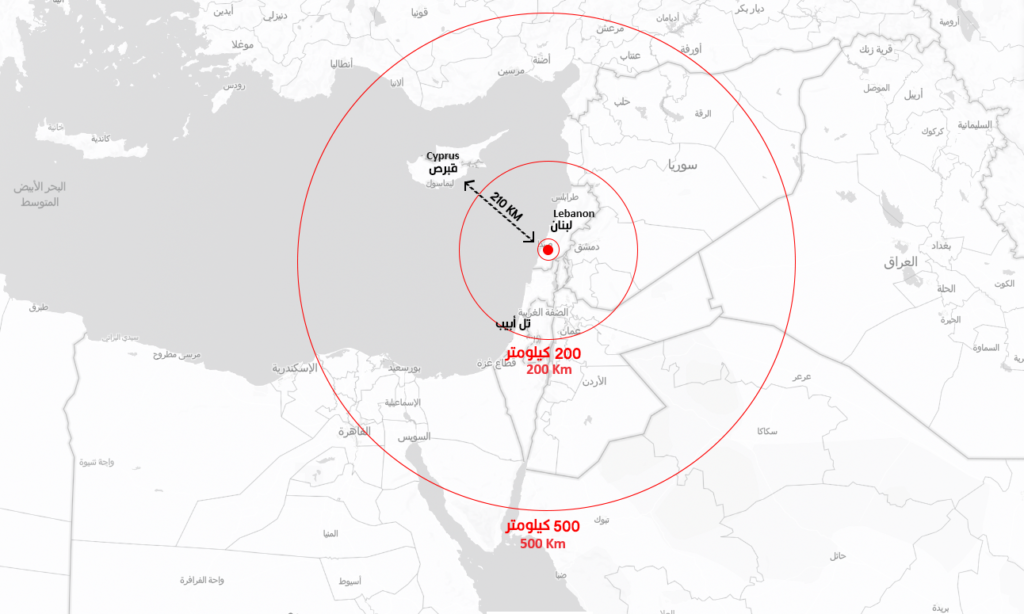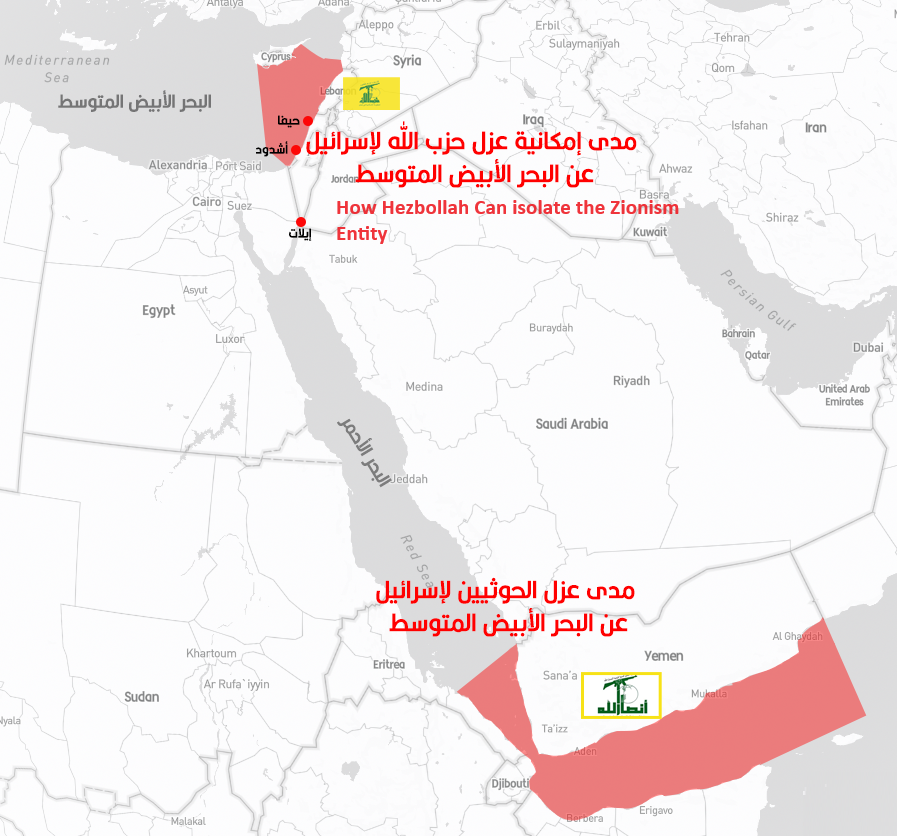Hezbollah recently threatened to strike Cyprus if it allows Israeli forces to use its airports to attack Lebanon, raising questions about its capability to carry out such threats, the type of weapons it possesses that can reach the Mediterranean island, and the potential implications for Israel.
What is at stake for Israel’s vital interests in the event of a war with Hezbollah? How might Israeli military assets be affected if the conflict escalates to include Cyprus? Can Hezbollah’s missiles reach Cyprus?
In this report by “Sunna Files Website,” answers to these questions are provided:
Furthermore, Hezbollah’s arsenal includes anti-ship weaponry that could further isolate Israel at sea, including the highly advanced Russian Yakhont missile, a supersonic weapon with a range of up to 300 kilometers.
Therefore, Hezbollah would likely not encounter significant obstacles in targeting the British Akrotiri airbase, the “Blue 2” horizon radar, the “Troodos” radar station, or intelligence gathering facilities in the Akrotiri peninsula, as well as the air force base in the Lakatamia suburb southwest of Nicosia, which serves as the command center for the Cypriot Air Force and houses some aircraft and air surveillance units.

The Mediterranean Sea serves as a gateway for about 90% of Israel’s imports before the current Gaza conflict and contributes 80% of its drinking water through desalination, along with supplying natural gas to aid in energy provision, according to “Times of Israel.” This means that any security events in the Mediterranean Sea deeply impact Israel due to its heavy reliance on trade through this sea.
In the Red Sea, Israel’s only port, Eilat, has reportedly seen an 85% decrease in activity since Houthi attacks began, affecting exports of potash from the Dead Sea, as well as imports of Chinese-manufactured cars, which constitute 70% of electric vehicle sales in Israel, relying on Eilat.
Hezbollah’s weapons arsenal
Hezbollah is considered the “world’s largest armed group” in terms of armament. It possesses anti-aircraft, anti-ship, anti-personnel, and armored vehicle weaponry.
Hezbollah possesses several advanced weapons and missiles capable of reaching all of the occupied territories, threatening Israel’s strategic and vital interests, especially as documented in “Al-Hadid” video recently released on monitoring sensitive Israeli occupation sites.

Nevertheless, Hezbollah’s arsenal size cannot be precisely determined, but its armed activity, statements, and Western media reports indicate ongoing expansion and development, with the ability to penetrate deep into Israeli territory.
As part of Iran’s allies, Hezbollah is the most experienced, organized, and armed, usually transferring its expertise to other groups describing themselves as the “Axis of Resistance.”
Hezbollah previously managed to target the Israeli Saar 5 warship during the July 2006 war, 18 years ago, and its arsenal of anti-ship weapons has evolved since then.

According to the Washington Institute for Near East Policy, an outbreak of war between Hezbollah and Israel would threaten Israeli military and commercial traffic in the Mediterranean Sea, vulnerable due to Hezbollah’s extensive anti-ship arsenal and its tactical surprise record.
Israeli naval vessels would also be at risk, including properties owned by American company Chevron.
Cyprus lacks air defenses
Currently, Cyprus and its outskirts lack strong air and missile defense networks according to the Center for Strategic and International Studies (CSIS).
However, according to “Times of Israel,” the Cypriot government reached a preliminary agreement in 2022 to purchase Iron Dome systems from Israel, although it is unclear if and when they will be delivered.
Thus, Cyprus could be vulnerable to Hezbollah rockets in the absence of British guided missile destroyers or NATO alliance.
The “Fatih 110” missiles can reach these targets either from Lebanon’s coastal mountainous regions or as far east as Baalbek in the Bekaa Valley, giving Hezbollah considerable flexibility to protect its launch platforms from counterattacks.
Hezbollah possesses a large stockpile of attack drones capable of reaching targets throughout Cyprus or targeting ships in the Mediterranean Sea.
Cyprus has frequently hosted joint air defense exercises and annual special forces exercises with Israel, focusing on potential threats from Hezbollah and Iran.
Hezbollah accused the British army of launching anti-aircraft missiles from its bases in Cyprus to confront the drones launched by the party against the Israeli occupation during the major Iranian attack on April 13, 2024.
The Golan Heights flared up
Lebanese sources revealed to us that Hezbollah has begun preparing its anti-aircraft arsenal in weapons depots it owns in Syria near the occupied Golan Heights.
They said that in preparation for a possible war, Iran also opened its warehouses of weapons to Hezbollah in Syria, “including short and medium-range ballistic missiles, drones, surveillance systems, and communications.”
They also promised to provide Russian weapons, including Russian communication and surveillance devices, surveillance ships, and anti-ship missiles.
An Iranian source also revealed to our site in a previous report that Iran would provide Iranian weapons, including “diamond anti-tank missiles, cruise missiles against ships with a range of 4 and 17 kilometers, and anti-drone missiles” capable of reaching the Mediterranean.
In addition to “Iranian reconnaissance drones without drones that can land and take off on the water surface and conduct reconnaissance missions that continue for 15 hours and marches.
Sunna Files Free Newsletter - اشترك في جريدتنا المجانية
Stay updated with our latest reports, news, designs, and more by subscribing to our newsletter! Delivered straight to your inbox twice a month, our newsletter keeps you in the loop with the most important updates from our website












